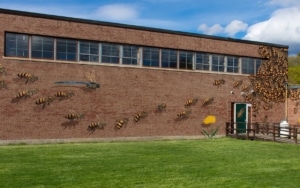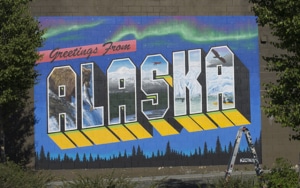While attending a friend’s 50th birthday party recently, I noticed his sneakerhead son wearing these cool blue Nike Air Jordans. The first thing that I noticed was their unique color, which I erroneously assumed was the famous “Carolina Blue” associated with the University of North Carolina where Michael Jordan played college basketball. When my friend’s son informed me that the shoes were “University Blue” and not “Carolina Blue”, it got me thinking about two of my favorite things – trademarks and college basketball. It also made me wonder how Nike could use a color that so closely resembles Carolina Blue, and why Nike called the color University Blue instead. After hours of online research, I was unable to find an answer to my question. However, based on my knowledge of trademark law, I have a possible explanation, which I will provide here.
The History of Carolina Blue
For more than two hundred years, the University of North Carolina has associated itself with a specific school color that has always been a shade of blue. The exact shade of blue, long known as Carolina Blue, however, has varied over the years, until relatively recently. According to fashion designer Alexander Julian, who helped re-design the basketball team’s jerseys in 1990, Carolina Blue is not like any other blue – it’s not powder blue, not baby blue, and certainly not aqua blue. In 2015, the University adopted a single shade of blue – Pantone 542 – as the official Carolina Blue, which is to be used in at least 10% of all designs. If you are interested in a deeper dive into the history of Carolina Blue, go check out 50 Shades of Blue: Tar Heels Seek the Truest Hue.
Color as a Trademark
Color marks are marks that consist solely of one or more colors used on particular objects. For marks used in connection with goods, color may be used on the entire surface of the goods, on a portion of the goods, or on all or part of the packaging for the goods. Some examples of well-known color trademarks include the color pink for Owens Corning fiberglass insulation, the color Brown for UPS trucks and uniforms, and the color “Tiffany Blue” for shopping bags and boxes for jewelry. Carolina Blue also falls into this category as the mere use of that particular shade of blue, or the mention of the name “Carolina Blue” is almost always associated with the University of North Carolina.
Trademark Infringement
In simple terms, trademark infringement exists when a defendant’s mark is likely to confuse the minds of consumers about the source or sponsorship of the goods or services offered under the parties’ marks. In 1985, after a lengthy legal battle, Owens-Corning became the first company in U.S. history to trademark a color. In 1995, Qualitex defended its right to trademark its signature green-gold dry cleaning pads. The U.S. Supreme Court ruled that color could, indeed, serve to identify a brand — and in doing so, opened up the floodgates for other companies to file their color trademarks.
Carolina Blue has long been associated with the University of North Carolina, particularly in connection with its basketball and athletic programs and athletic apparel. As such, both the name “Carolina Blue” and the particular shade of blue – Pantone 542, are certainly protected by U.S. Trademark law. So how is it that Nike is able to use a very similar color on athletic shoes and call it University Blue without infringing on the valid trademarks of the University of North Carolina?
Trademark Licensing
First of all, there is no doubt in my mind that, absent the knowledge and consent of the University of North Carolina, Nike’s use of a particular shade of blue and probably the name “University Blue” constitutes trademark infringement. I looked long and hard for evidence of some sort of agreement between Nike and UNC but did not find anything. However, given their long history of working together – it is said that Nike had a hand in selecting the shade for Carolina Blue – the two almost certainly came to an agreement whereby UNC allowed Nike to use the color and agreed not to object to the use of the University Blue name, in exchange for some value (most likely a royalty on sneakers sold). This tactic is commonly used across brands to cross-promote and sell products that are beneficial to both parties. In this case, I suspect that UNC had no problem with Nike’s use of the specific color to sell its Air Jordan shoes since Jordan has ties to both Nike and UNC. However, I suspect the UNC did not want to go so far as to allow Nike to market the shoes as “Carolina Blue”, so the different, but similar University Blue was created.
We Can Help You
If you have questions about trademarking a name, logo, design, slogan, or even a color for a product or service, or if you are concerned that your use of a name, symbol or phrase may infringe on the trademark rights of someone else, contact us to discuss how our attorney, Rick Martin, can help you protect your valuable trademark rights!

 “Imagine moving dirt with a machine while sitting in the comforts and safety of an airconditioned office. No more all-day full-body vibrations. Coffee in hand, you’ll soon be digging a hole 2,500 (or more) miles away with the new Cat® Command station. Cat.com Link: Cat Command for Construction Video: Cat Command Promotional Overview”
“Imagine moving dirt with a machine while sitting in the comforts and safety of an airconditioned office. No more all-day full-body vibrations. Coffee in hand, you’ll soon be digging a hole 2,500 (or more) miles away with the new Cat® Command station. Cat.com Link: Cat Command for Construction Video: Cat Command Promotional Overview” Aido is the next generation modular Service Robot specifically designed for Households, Hospitality , Healthcare. Featured by Disney, Forbes, PopSci, IEEE, BCG, Discovery, Mashable, T3, and more. We use complex mechanical designs with state-of-the-art electronics, scalable architecture, and, artificial intelligence with advanced manufacturing.
Aido is the next generation modular Service Robot specifically designed for Households, Hospitality , Healthcare. Featured by Disney, Forbes, PopSci, IEEE, BCG, Discovery, Mashable, T3, and more. We use complex mechanical designs with state-of-the-art electronics, scalable architecture, and, artificial intelligence with advanced manufacturing. The Arduino Oplà IoT Kit is for anyone trying to make their home or office just a little bit smarter. The kit is an edge-to-cloud IoT system that’s backed by helpful tutorials and getting-started projects (e.g. smart thermostat, smart lighting, smart garden etc) that will have you automating your home in no time.
The Arduino Oplà IoT Kit is for anyone trying to make their home or office just a little bit smarter. The kit is an edge-to-cloud IoT system that’s backed by helpful tutorials and getting-started projects (e.g. smart thermostat, smart lighting, smart garden etc) that will have you automating your home in no time.


 Atlanta, GA – Earlier this month (March 2020),
Atlanta, GA – Earlier this month (March 2020),  Toward the end of last month,
Toward the end of last month, 
